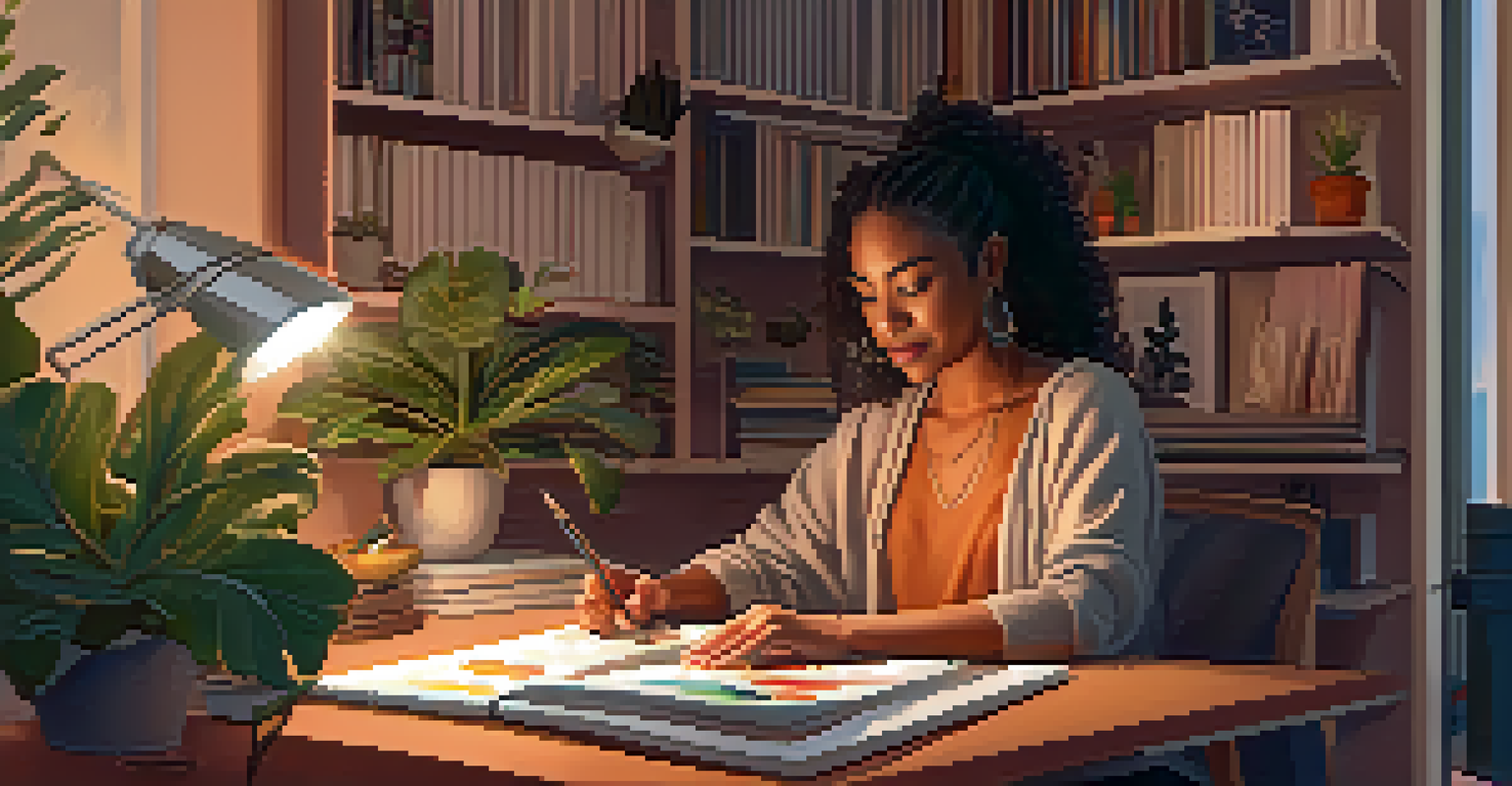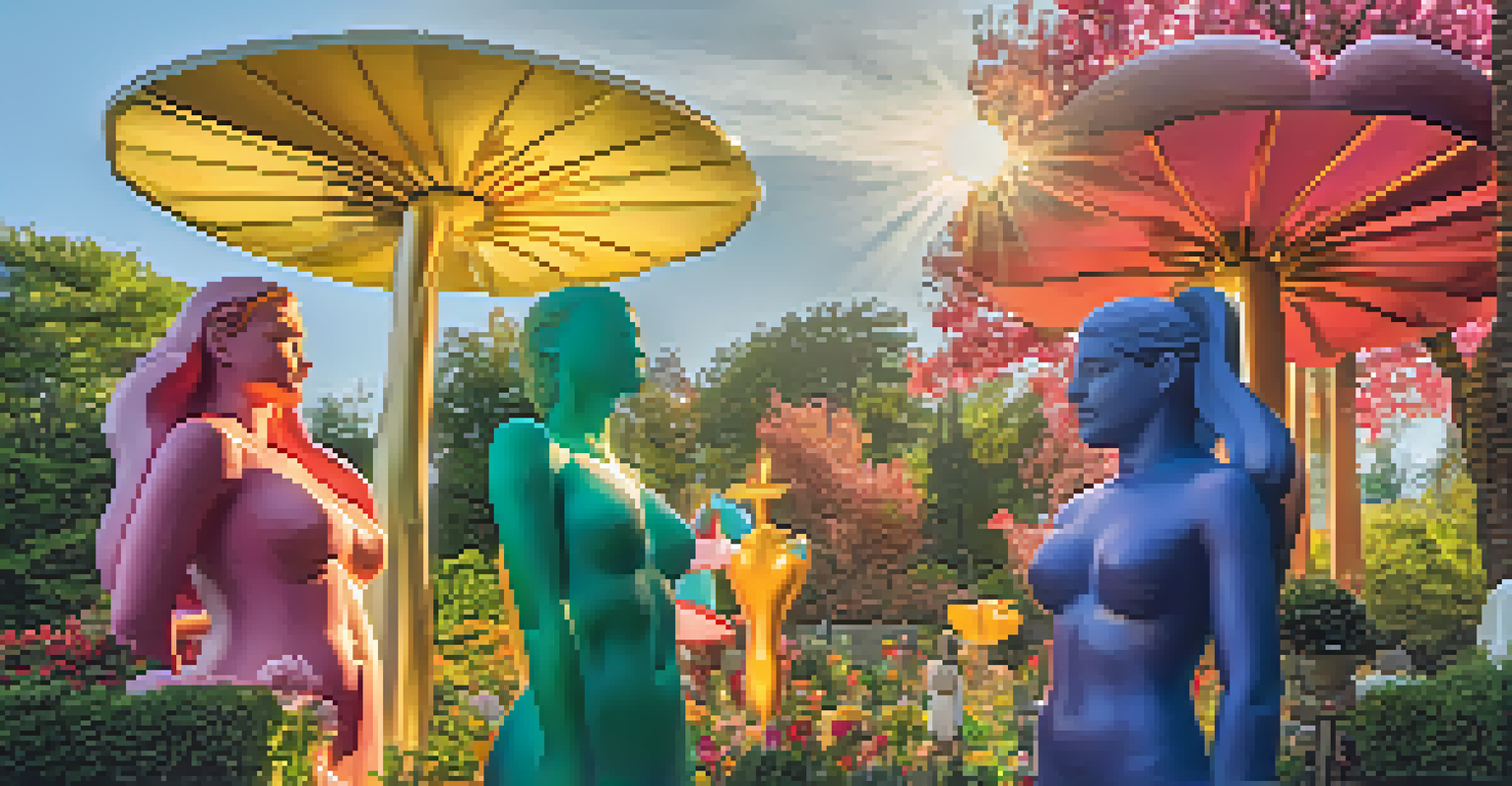Gender and the Gaze: Women Artists Redefining Perspectives

Understanding the Concept of the Gaze in Art
The term 'gaze' refers to the way viewers engage with visual art. Traditionally, this concept has been male-dominated, where the male perspective has shaped the narrative of art history. This has often led to a limited portrayal of women, both as subjects and creators.
The gaze is a form of power, and women artists are reclaiming that power by redefining how they are seen and how they see themselves.
In this context, women artists are not just challenging the traditional gaze; they are redefining it. By presenting their own perspectives, they create a space for alternative narratives that celebrate women's experiences and identities. This shift allows for a more inclusive understanding of art.
Understanding the gaze is essential to appreciate how women artists navigate and transform visual culture. Their works invite us to rethink who gets to look and who is being looked at, leading to a richer dialogue about representation in the art world.
Historical Context: Women Artists in Traditional Roles
Historically, women artists have often been relegated to the sidelines, overshadowed by their male counterparts. Even when they produced remarkable art, recognition was sparse. This imbalance has roots in societal norms that limited women's roles to domestic spheres.

The Underrepresentation of women in art movements has created a narrative that often ignores the contributions of female artists. This historical oversight has contributed to a skewed understanding of art, where male perspectives dominate. However, this is changing as more women reclaim their space in the arts.
Redefining the Gaze in Art
Women artists are challenging traditional narratives, creating space for diverse perspectives that celebrate their experiences and identities.
By revisiting history, we can see how women artists have always been present, even if their voices were muted. This historical context sets the stage for contemporary artists to challenge and redefine the traditional gaze, asserting their rightful place in art history.
Contemporary Artists Challenging the Gaze
Today, numerous women artists are boldly challenging the established norms of the gaze. Artists like Cindy Sherman and Tracey Emin have explored themes of identity and femininity, using their work to question how women are perceived in society. Their art often turns the gaze back on the viewer, prompting reflection on societal expectations.
Art is a reflection of society, and the voices of women must be included to create a complete picture.
These contemporary artists not only critique the traditional representations of women but also celebrate their complexities. By portraying themselves in various roles, they disrupt the singular narrative often assigned to female subjects. This multifaceted approach allows for a richer understanding of womanhood.
Moreover, the rise of digital media has provided a platform for even more women to express their perspectives. Social media, in particular, has democratized art, enabling artists to reach wider audiences and engage in conversations that redefine the gaze.
The Role of Intersectionality in the Gaze
Intersectionality plays a crucial role in how women artists redefine the gaze. This concept acknowledges that individuals experience oppression differently based on various identities such as race, class, and sexuality. Women artists who embrace intersectionality highlight the diverse experiences of womanhood.
By incorporating intersectional perspectives, these artists create works that resonate with a broader audience. For instance, artists like Kerry James Marshall and Frida Kahlo have used their unique backgrounds to challenge dominant narratives and offer new insights into the female experience. This enriches the dialogue surrounding the gaze.
Intersectionality Enhances Representation
By embracing intersectionality, women artists highlight the varied experiences of womanhood, enriching the dialogue around representation in art.
Ultimately, intersectionality encourages us to consider multiple viewpoints, fostering a more inclusive art world. It emphasizes that there is no singular experience of womanhood, allowing for a vibrant tapestry of stories to emerge.
The Impact of Feminist Art Movements
Feminist art movements have fundamentally transformed how we engage with the gaze in art. These movements emerged in response to the marginalization of women in the art world, advocating for recognition and equality. They have inspired generations of women artists to explore themes of gender and identity.
Through various forms of expression, feminist artists have challenged societal norms and expectations. Their work often critiques the male gaze while simultaneously empowering women to embrace their narratives. This has led to a broader acceptance of diverse artistic expressions.
The impact of these movements continues to be felt today as new generations of artists build on these foundations. By fostering dialogue around women's rights and representation, feminist art movements have reshaped the artistic landscape, championing the voices of women.
The Influence of Technology and Social Media
In today's digital age, technology and social media have transformed how art is created and shared. Platforms like Instagram and TikTok allow women artists to showcase their work and engage with audiences directly, bypassing traditional gatekeepers. This democratization of art has significantly impacted the gaze.
Women artists are now able to present their perspectives on their own terms, creating a more intimate connection with viewers. This shift enables them to challenge stereotypes and redefine narratives in real-time, fostering a sense of community and support among artists.
Technology Empowers Women Artists
The rise of digital media and social platforms allows women artists to share their work directly, fostering community and redefining artistic narratives.
Furthermore, digital art has become a powerful medium for exploring themes of gender and identity. By utilizing technology, artists can experiment with new forms of expression, pushing the boundaries of how the gaze is perceived and interpreted.
Looking Ahead: The Future of Women Artists and the Gaze
As we look to the future, the role of women artists in redefining the gaze continues to evolve. With increasing visibility and support, more women are stepping into the spotlight to share their unique perspectives. This shift promises to enrich the artistic landscape with diverse narratives.
The ongoing conversations around gender and representation will likely spur further innovation in artistic expression. Emerging artists are poised to challenge existing norms, creating works that reflect the complexities of modern society. This momentum is essential for fostering a more inclusive art world.

Ultimately, the future of women artists is bright, with endless possibilities for redefining the gaze. By embracing their narratives and challenging traditional perceptions, they will continue to shape the art world and inspire future generations.